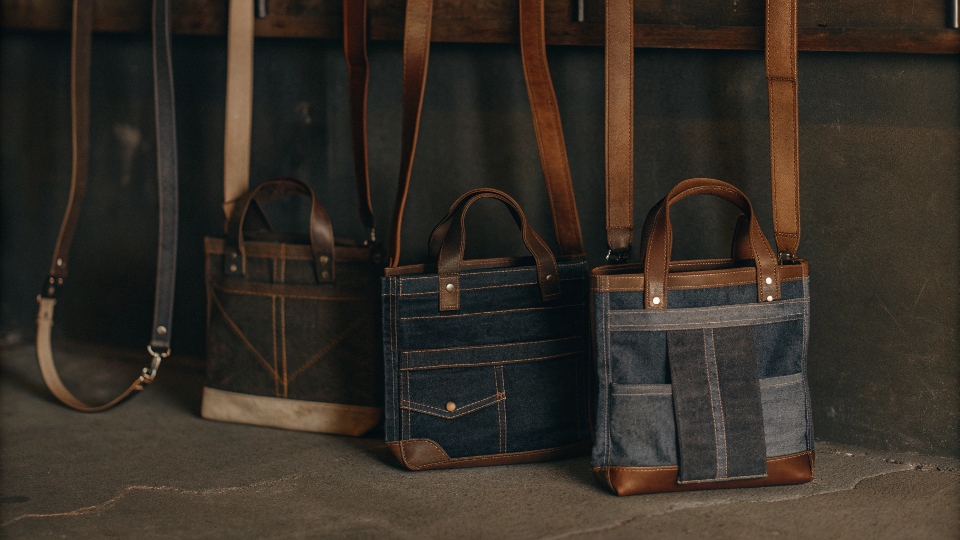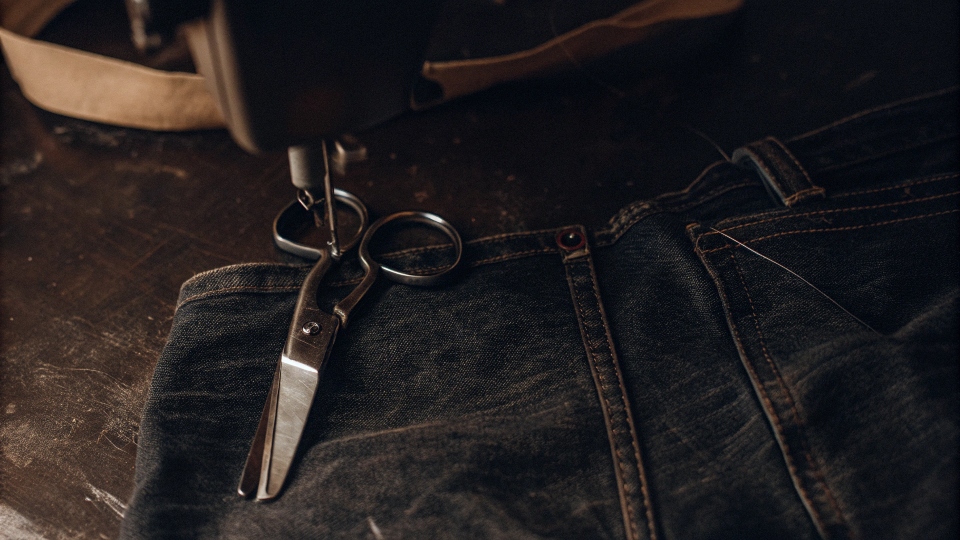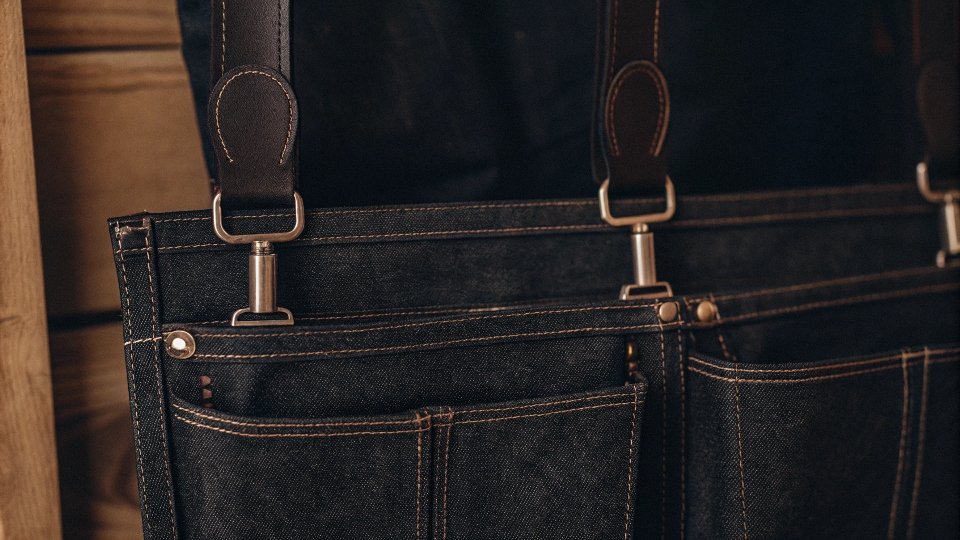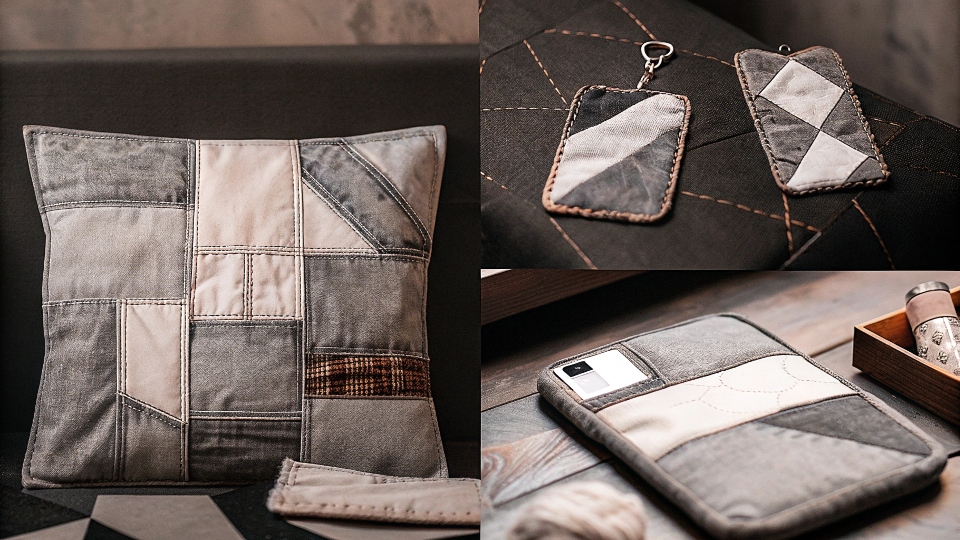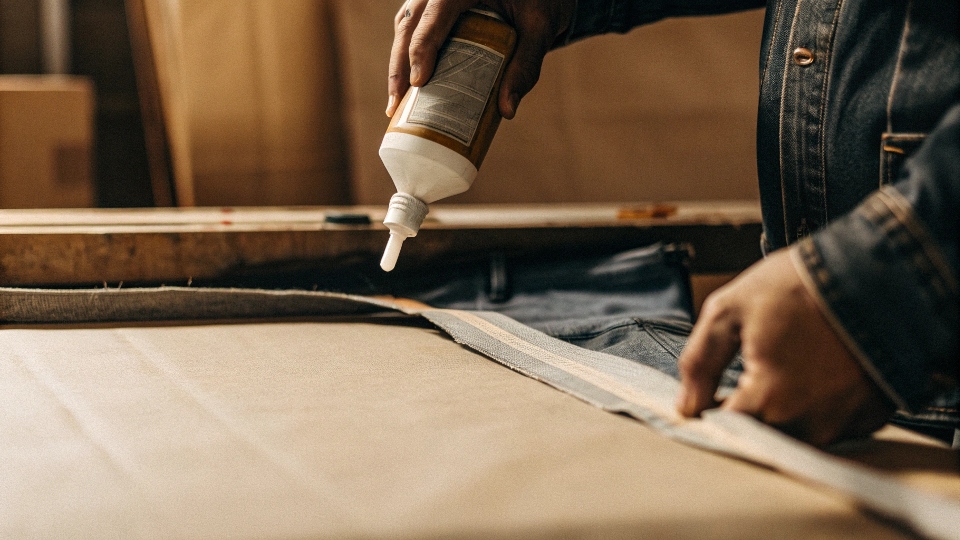You have a pile of old jeans1 that don't fit anymore, but you can't bring yourself to throw them away. They hold memories, and the fabric is still good. They just sit there taking up space.
You can easily transform a pair of old jeans into a stylish, durable bag2. The basic steps are to cut a section from the jeans, sew the bottom and sides closed3, and then create and attach straps4 from the remaining fabric.
Over the last 20 years in my denim factory, I’ve handled millions of pairs of jeans. But the ones that still excite me the most are the projects that give old denim a new life.
Turning a worn-out pair of jeans into a brand-new bag isn't just a craft project; it's a small-scale version of what we call "upcycling" in the industry.
It's about seeing the value in what you already have. You don't need to be an expert to do it. Let me guide you through the process, just as I would with a young designer starting their first collection.
How to make a bag out of jeans step by step?
You want to try making a bag, but the tutorials online look complicated. You're worried about cutting the fabric wrong or making a mistake that ruins the whole project before you even start.
Start with the simplest method: turn a pant leg into a tote. Cut off one leg below the knee, turn it inside out, sew the cut end closed, and attach a simple strap. It's a foolproof way to create a functional bag in minutes.
In manufacturing, we always start with a prototype to test an idea. This simple tote is your perfect first prototype. It's low-risk and teaches you the basic principles.
The Basic Construction Plan
Before you touch a pair of scissors, have a clear plan. We never cut fabric in the factory without a precise guide. First, wash and dry the old jeans to make sure they are clean.
Then, lay them flat and decide on the size. For a simple tote, you just need a single leg. For straps, you'll use fabric from the other leg.
A Step-by-Step Guide to Your First Jean Bag
This process breaks down how to create a simple tote bag. Reinforcing the stitches, especially where the straps meet the bag, is critical for durability—it's a detail we never skip in professional production.
| Step | Action | Pro Tip |
|---|---|---|
| 1. Cut the Body | Cut one leg off your jeans at your desired bag length, adding an inch for the seam. | Cut below the knee for a tall, narrow tote. |
| 2. Sew the Base | Turn the cut leg inside out. Sew a straight line across the bottom (the cut edge) twice for extra strength. | Backstitch at the start and end of your seam to lock it in place. |
| 3. Prepare Straps | From the other leg, cut two long strips of fabric, each about 3 inches wide. Fold and sew them into strong straps. | You can fold the raw edges inward before sewing for a cleaner, more finished look. |
| 4. Attach Straps | Turn the bag right-side out. Pin the straps to the inside of the top opening and sew them securely in place. | Sew a box shape with an "X" inside where the strap connects for maximum durability. |
How do you make a good bag step by step?
Your first bag is functional, but you want to create something that looks less homemade. You want a bag with more character and structure, something that looks intentionally designed, not just pieced together.
To make a better bag, use the top part of the jeans. This gives you a pre-made opening, sturdy belt loops, and built-in pockets5 for storage. This method creates a professional-looking bag with minimal extra sewing.
This is a trick I share with designers like Dean when they're brainstorming. The most interesting parts of a pair of jeans are the waistband, pockets, and yoke. By using this "top block" as the foundation of your bag, you are borrowing all of the professional construction that's already there. It’s about working smarter, not harder.
The "Top Block" Bag Method
This technique feels like a magic trick. You simply cut the jeans horizontally a few inches below the crotch seam. That's your bag's body. The original button and zipper can even serve as a closure.
Just turn this piece inside out and sew the bottom opening shut. When you turn it right-side out again, you have a bag with two front pockets (and a coin pocket!) and two back pockets. The waistband creates a sturdy, finished top opening.
All that's left is to add a strap, which you can make from the leftover legs. You can even pass a long strap through the belt loops for a different style. This approach elevates your project from a simple tote to a structured, multi-pocket bag instantly.
| Feature | Simple Leg Tote | "Top Block" Bag |
|---|---|---|
| Pockets | None (unless you add them) | 4+ pockets are already built-in |
| Closure | Open top | Can use the original jean zipper/button or add a new one |
| Structure | Soft and unstructured | More rigid, holds its shape better |
| Effort | Minimal sewing | Slightly more complex cutting, but less finishing work |
Are there other ways to reuse a pair of old jeans?
You've successfully made a bag, but now you have leftover fabric scraps. Throwing them out feels wasteful, especially after you've put so much creative energy into your project.
Absolutely. The durability of denim makes it perfect for countless other projects. You can use the scraps to make coasters, placemats, decorative patches, small pouches, or even piece them together into a larger quilt or pillowcase.
In my factory, minimizing waste is a financial and ethical priority. We plan our cuts to use every possible inch of a denim roll. You can apply the same mindset at home. Every scrap is an opportunity.
From Scraps to Treasures
Think about the properties of denim: it's strong, washable, and looks great a little frayed. This makes it ideal for items that need to be durable.
-
For Your Home: Cut uniform squares from the scraps. Either sew a simple hem around the edges or let them fray naturally to create rustic drink coasters or placemats. You can also sew scraps together to create a unique patchwork cover6 for a pillow or a small floor mat.
-
For Your Wardrobe: Use small pieces to patch up another pair of jeans or a jacket. This technique, inspired by Japanese Boro, is not just a repair; it's a style statement. It tells a story of an item being loved and maintained.
-
For a Gift: Sew two small squares together, add a zipper, and you have a tiny coin purse. Or, wrap a piece of denim around a blank notebook to create a personalized journal cover. These small, thoughtful items make fantastic gifts.
How to make a bag out of jeans legs without sewing?
You love the idea of upcycling your jeans, but you don't own a sewing machine and have zero interest in learning how to sew by hand. You feel excluded from the creative process.
You can easily make a no-sew bag7 using strong fabric glue or iron-on hem tape to seal the edges. For the strap, you can simply cut and tie strips of denim or braid them for extra strength.
Don't let a lack of sewing skills stop you. In product development, we often use adhesives and bonding techniques to create prototypes before committing to a final stitched design. The key is choosing the right adhesive for the job.
Your No-Sew Toolkit
There are two fantastic, reliable options for creating strong bonds on denim without a single stitch.
-
Permanent Fabric Glue: This is your best bet for a strong, flexible hold. Look for a glue specifically designed for heavy fabrics like denim. To use it, turn your jean leg inside out, apply a thin, even line of glue along the edge you want to seal, press the two sides together firmly, and let it cure completely. Curing time is critical—read the instructions on the bottle. Don't rush it.
-
Iron-On Hem Tape: This is a web-like adhesive that melts when heated. You place the tape between the two layers of fabric, cover it with a cloth to protect the denim from the direct heat, and press it with a hot iron. As it cools, it creates a very strong, permanent bond.
For the straps, you can get creative. Cut a few long, thin strips from the other jean leg. Braid them together to create a thick, strong strap and then simply tie it securely to the top corners of your bag.
| Method | How It Works | Pros | Cons |
|---|---|---|---|
| Fabric Glue | A liquid adhesive that air-dries. | Strong, flexible, no tools required. | Can be messy, requires long curing time. |
| Hem Tape | A solid adhesive activated by heat. | Fast, clean, creates a crisp edge. | Requires an iron, can be slightly stiff. |
Conclusion
Turning old jeans into a bag is a simple, rewarding project for anyone. Whether you sew or not, you can upcycle that forgotten denim into something new, useful, and uniquely yours.
-
Explore innovative ideas to give your old jeans a new life and reduce waste. ↩
-
Learn how to transform your old jeans into a fashionable and sturdy bag. ↩
-
Get tips on sewing denim effectively for your crafting needs. ↩
-
Learn different techniques for securely attaching straps to your handmade bags. ↩
-
Learn how to incorporate existing pockets into your DIY bag designs. ↩
-
Learn how to create a unique patchwork cover using your old denim. ↩
-
Find out how to create a stylish bag without any sewing skills required. ↩

